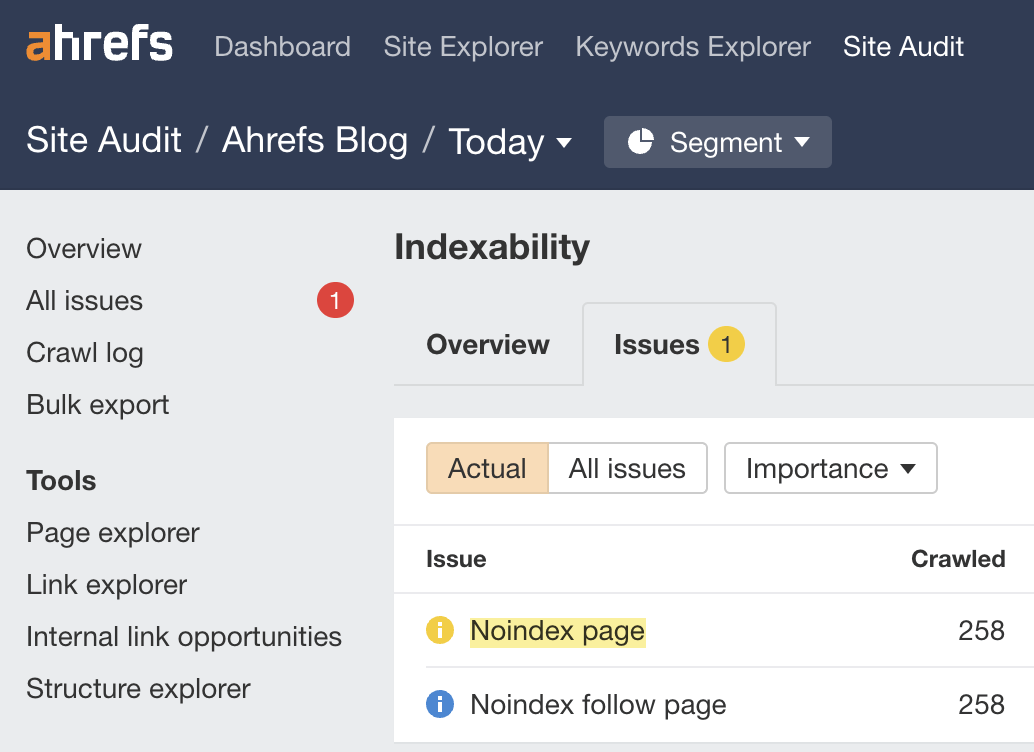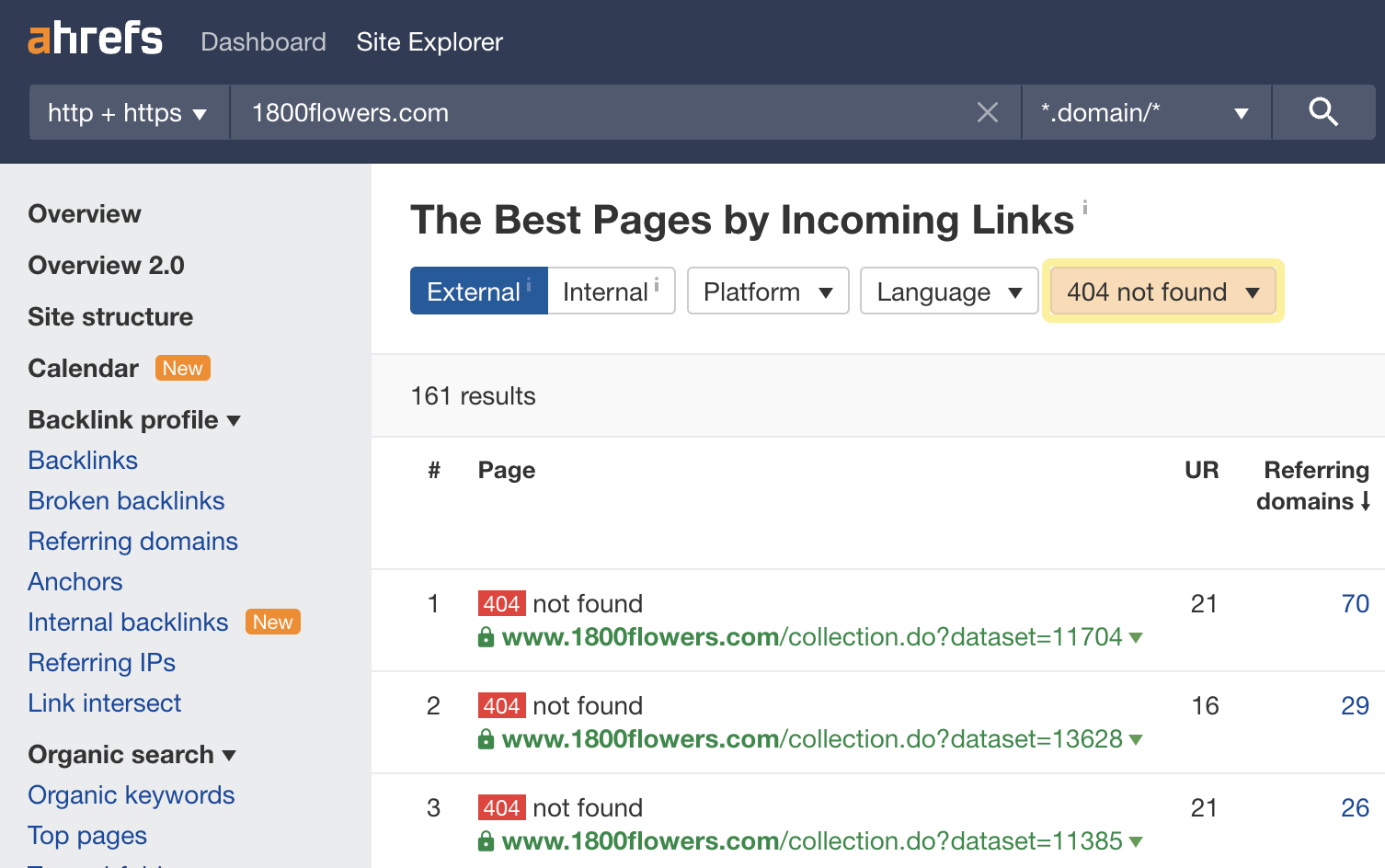One of the hardest things for SEOs is prioritization. There are a lot of best practices, but some changes will have more of an impact on your rankings and traffic than others. Here are some of the projects I’d recommend prioritizing.
Check indexing
Make sure pages you want people to find can be indexed in Google. The two previous chapters were all about crawling and indexing, and that was no accident.
You can check the Indexability report in Site Audit to find pages that can’t be indexed and the reasons why. It’s free in Ahrefs Webmaster Tools.

Reclaim lost links
Websites tend to change their URLs over the years. In many cases, these old URLs have links from other websites. If they’re not redirected to the current pages, then those links are lost and no longer count for your pages. It’s not too late to do these redirects, and you can quickly reclaim any lost value. Think of this as the fastest link building you will ever do.
You can find opportunities to reclaim lost links using Ahrefs’ Site Explorer. Enter your domain, go to the Best by Links report, and add a “404 not found” HTTP response filter. I usually sort this by “Referring Domains”.
This is what it looks like for 1800flowers.com:

Looking at the first URL in archive.org, I see that this was previously the Mother’s Day page. By redirecting that one page to the current version, you’ll reclaim 225 links from 59 different websites—and there are plenty more opportunities.
You’ll want to 301 redirect any old URLs to their current locations to reclaim this lost value.
DID YOU KNOW?
A 301 redirect is a permanent redirect. Any links pointing to the redirected URL will count toward the new URL in Google’s eyes.[3]
Add internal links
Internal links are links from one page on your site to another page on your site. They help your pages be found and also help the pages rank better. We have a tool within Site Audit called Internal Link Opportunities that helps you quickly locate these opportunities.
This tool works by looking for mentions of keywords that you already rank for on your site. Then it suggests them as contextual internal link opportunities.
For example, the tool shows a mention of “faceted navigation” in our guide to duplicate content. As Site Audit knows we have a page about faceted navigation, it suggests we add an internal link to that page.

Add schema markup
Schema markup is code that helps search engines understand your content better and powers many features that can help your website stand out from the rest in search results. Google has a search gallery that shows the various search features and the schema needed for your site to be eligible.
Leave a Reply